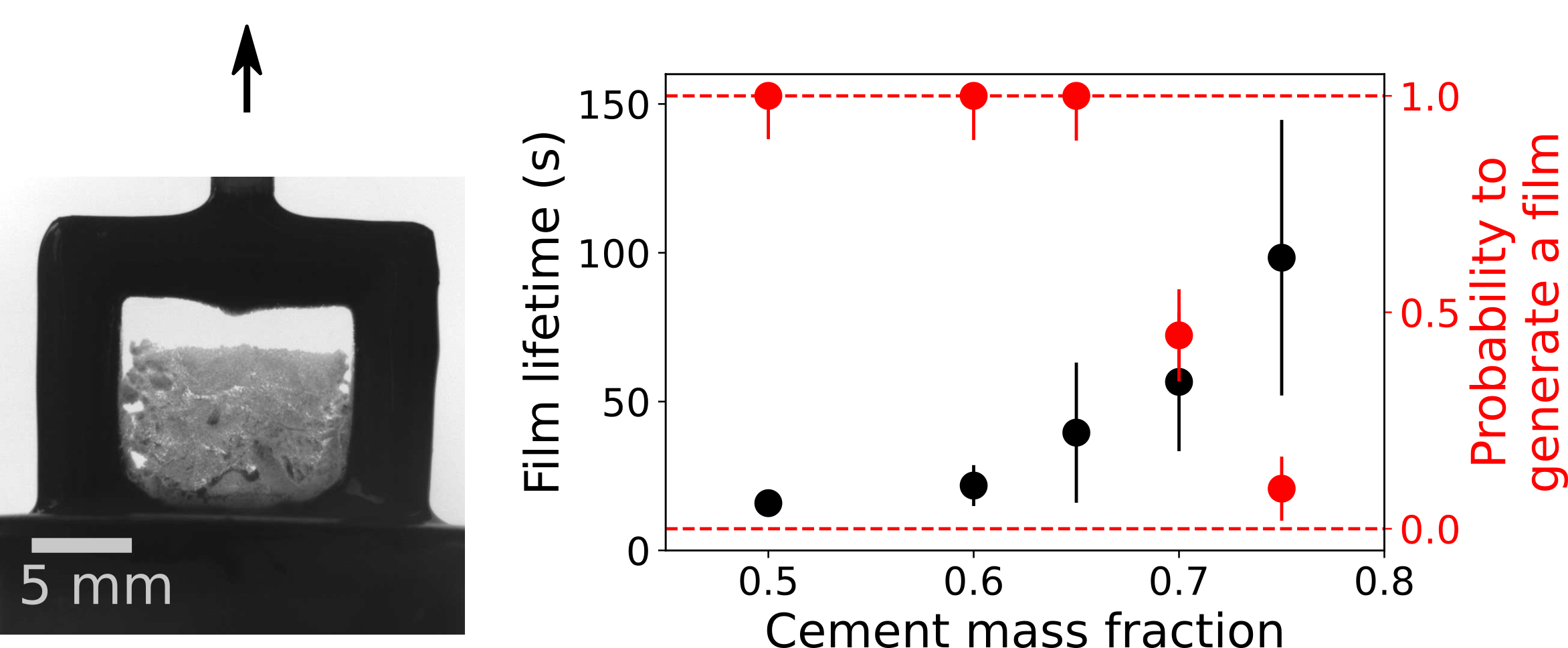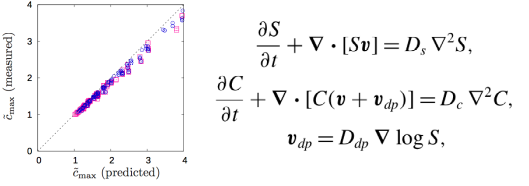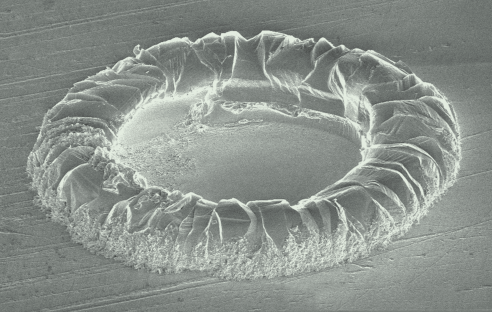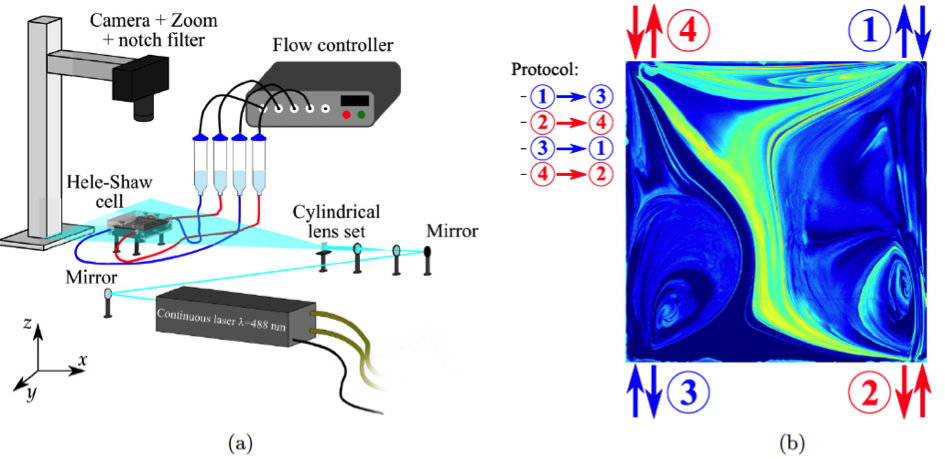Multi-scale interfaces |
| In the past few years, we have initiated a multi-scale approach seeking to establish the link between dynamical processes taking place at the nanoscale and behaviors observed at macroscopic scale. Our studies seek to reunify field of physical sciences that are usually disconnected, such as nanosciences and physics of liquids at various scales. Our entry point is the key role of interfaces, which provide an efficient way to couple effects at different scales. Our research themes include: - super wetting and transport in laminar regime, - interfacial flows and osmotic, - large-scale super-hydrophobic surfaces, - chaotic transport and mixing. |
|
Members: Biance, Anne-Laure Colombani, Jean |
|
Highlights
|
Generation and stability of cement soap filmsBy withdrawing a frame from a fresh cement suspension at controlled velocity, we find an optimum solid fraction to achieve both generation and stability of the cement soap films. These films are the elementary units of foamed cement used to elaborate new porous insulating building materials. Generation and stability of cement soap films, Ahmed Abdourahman et al., Soft Matter (2021). |
|
|
Diffusiophoretic effects in mixingPursuing investigations of phoretic effects in the transport and mixing of suspended particles, we explore the coupling between linear flows and diffusio- or thermophoretic drift. This analytically tractable problem allows pointing remarkable properties of phoretic particle transport, such as the compressible nature of the particle velocity field, in close analogy with the transport of inertial particles. Advection and diffusion in a chemically induced compressible flow, Raynal et al. J. Fluid Mechanics (2018) |
Maximum phoretic focusing for different flows characteristics. |
Salt tunnels formed by the evaporation of a dropWe have observed thin salt shells that form at the periphery of evaporating pure water drops on salt. Shell shapes range from rings of inclined walls to hollow toroidal rims. We have interpreted this phenomenon as a consequence of a molecular coffee-stain effect by which the dissolved salt is advected toward the pinned contact line where an increased evaporation drives the crystallization of the shell. Hollow rims from water frop evaporation on salt substrates, Mailleur et al., Phys. Rev. Lett. (2018) |
Scanning electron micrograph of a hollow rim formed in water drop evaporation on a single crystalline NaCl substrate. |
Freezing water droplets on heated highly hydrophobic surfaceWe experimentally study the freezing process of water drops and its temporal stability on highly hydrophobic surfaces. Main results: (i) three different mechanisms influenced by the substrate’s temperature, lead to the disappearance of the frozen droplets. A “Cassie ice state” can be reached. (ii) instabilities and convective cells are observed on heated substrates. Stability of frozen water droplets on highly hydrophobic..., Ramos et al., Appl. Surf. Sc. (2018). |
Summary of main results of this study. Placed on heated substrate the water droplets freeze under low pressure. |
Simulations of a topological rearrangement in foamsThe elementary process in the flow of a foam is a T1 event, a topological rearrangement involving the relative motion of bubbles which switch neighbours. Using level-set simulations that describe the interface and surfactant dynamics, we investigate the role of surfactants and find that their presence can change the nature of the flow from purely extensional to a shear. Level-set simulations of a 2D topological rearrangement in a bubble assembly..., Titta et al., J. Fluid Mechanics (2018). |
(Left) The simulation set-up: bubbles are sheared by the motion of top and bottom plates (Right) Bulk surfactant concentration in the foam liquid film. |
Diffusiophoresis in macroscale mixingWe pursue our studies on chaotic mixing of environment-sensing particles in collaboration with our colleagues at ENS de Lyon and LMFA. Exploring chaotic advection flows at macro-scale, we demonstrate that nanoscale diffusiophoresis can trigger global changes in the mixing behavior. Remarkably, diffusiophoresis is shown to affect all scales, although more particularly the small ones, resulting in a change of scalar intermittency and in an unusual scale bridging spanning more than seven orders of magnitude. Diffusiophoresis at the macroscale, Mauger et al. Phys. Rev. Fluids (2016). |
Chaotic mixing in Hele-Shaw cell: Altered transport of particles bye unerlying salt gradients. |
Drop evaporation on superhydrophobic surfacesWe experimentally study the evaporation of drops on heated superhydrophobic surfaces decorated with micrometer-sized mushroom-like pillars.The drop evaporation appears to be controled by the contact line dynamics. Main results (i) in the pinned regime, the substrate heating promote the contact line depinning; (ii) in the moving regime, the droplet motion is described by periodic stick−slip events and contact-angle oscillations (iii) remarkable stability of the “fakir” state to the temperature. Water drop evaporation on mushroom-like super-hydrophobic surfaces..., Marcelo do Nascimento et al., Langmuir (2016) |
SEM image of a typical investigated sample and snapshots of the top views of an evaporating sessile drop, |
More highlights |
























